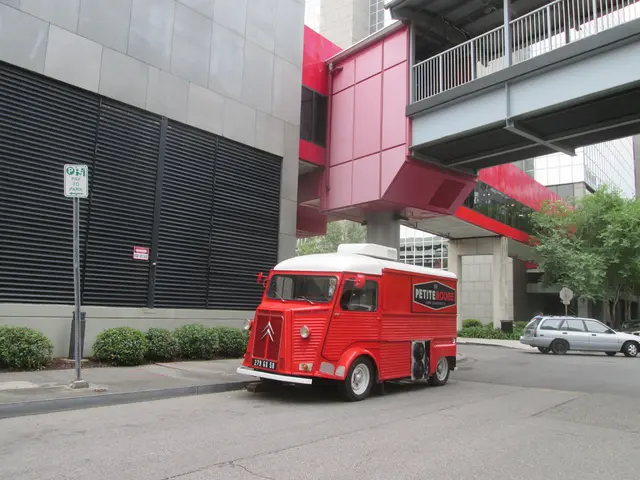Frequencies of car commutes among Germans show a slight decrease - Reduced Auto Commuting Among Germans Observed
In Germany, a slight decline was observed in the use of personal cars as a means of commuting to work in 2021. According to the Federal Statistical Office's microcensus, 65% of commuters opted for cars, a decrease of three percentage points compared to four years ago. However, cars remain the most popular mode of transportation for work commutes in the country.
The use of public transportation saw a minor increase,with 16% of commuters utilizing it, an uptick of two percentage points from the previous survey. The Federal Statistical Office attributes this growth to the introduction of the Germany Ticket, a subscription that many employers either cover or subsidize. Six percent of commuters walked to their workplace, a one percentage point rise from 2020. The cyclist share remained constant at 10%.
Regardless of the chosen transportation mode, 70% of commuters needed less than 30 minutes to travel from their residence to their workplace. Nearly every fifth person (19%) traveled within ten minutes, while half (50%) took between ten and twenty-nine minutes. Only six percent of commuters spent more than an hour traveling to and from work each day.
Factors that may have contributed to the decrease in car usage among commuters could include the impact of the COVID-19 pandemic on overall travel habits, growing awareness of environmental issues, and the appeal of enhanced public transportation and cycling infrastructure. The specific impact of the Germany Ticket on public transportation usage is not explicitly mentioned in the microcensus data.
On a broader scale, Central Europe is observing a rise in public transportation innovations, such as automation and decarbonization, designed to improve efficiency and appeal to commuters. The introduction of new train stations in Germany has led to a decline in car registrations nearby, suggesting a shift towards rail usage.
- The decrease in car usage among commuters in Germany might be attributed to factors such as the impact of the COVID-19 pandemic on travel habits, growing awareness of environmental issues, and the appeal of enhanced public transportation and cycling infrastructure.
- The rise in public transportation usage could be due to the introduction of initiatives like the Germany Ticket, a subscription that many employers either cover or subsidize, encouraging commuters to opt for public transportation.
- Central Europe is witnessing an increase in public transportation innovations, including automation and decarbonization, aiming to improve efficiency and appeal to commuters, as demonstrated by the decline in car registrations near new train stations in Germany.








